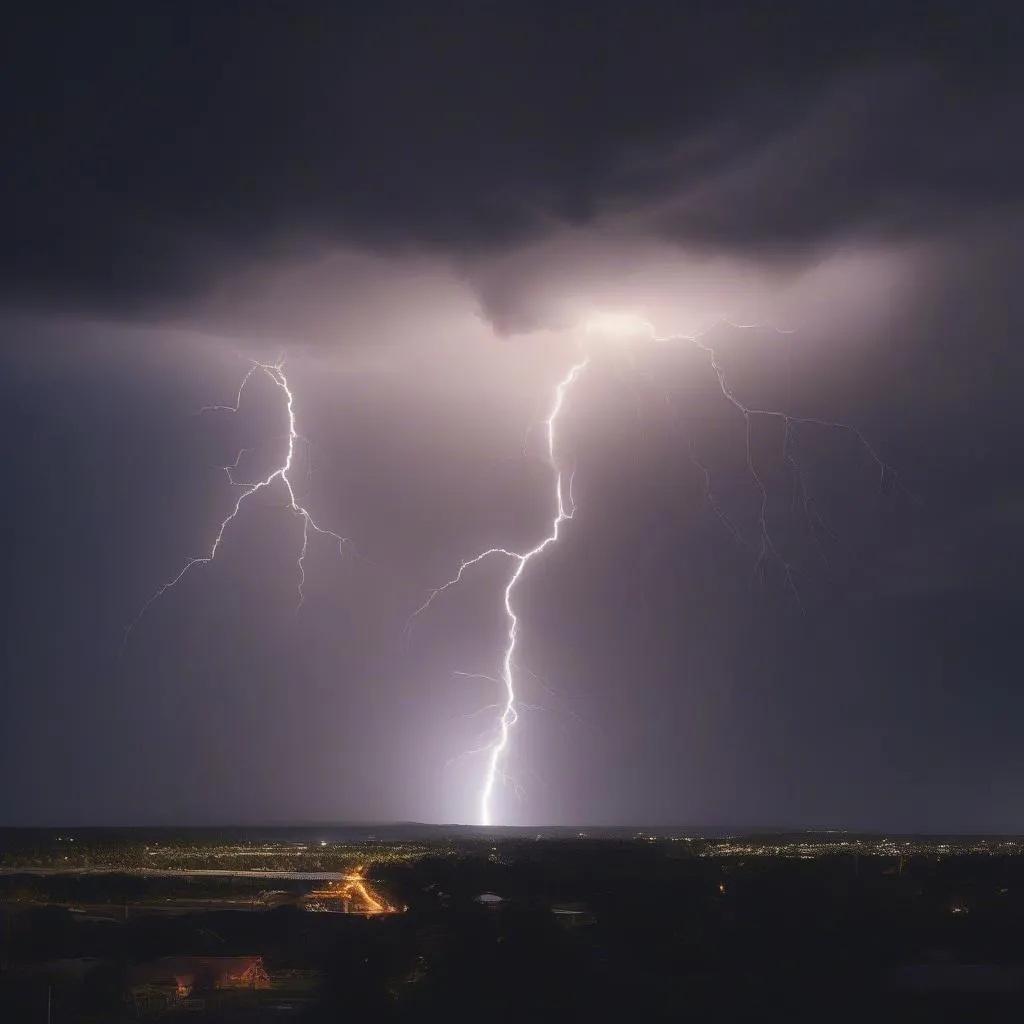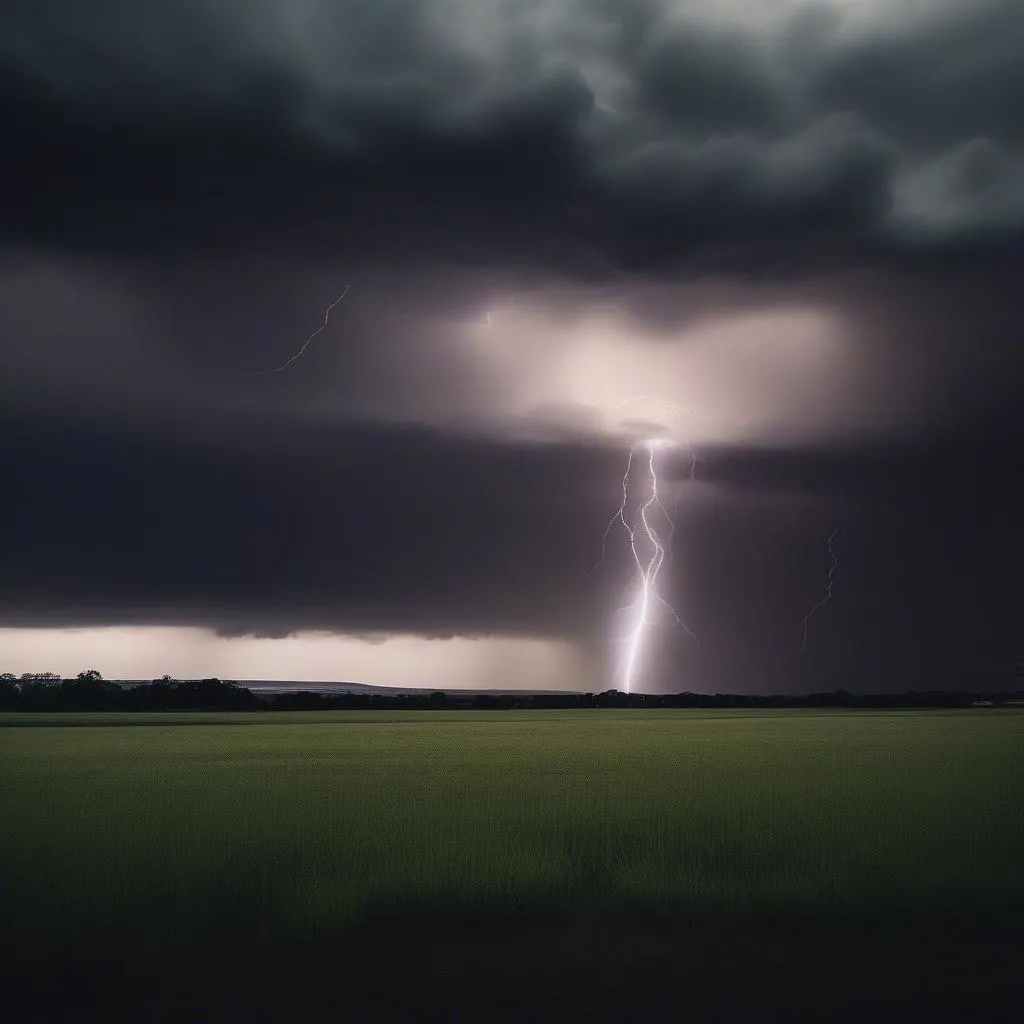Have you ever gazed in awe at a raging thunderstorm, mesmerized by the brilliant flashes of lightning splitting the sky? It’s a natural spectacle that evokes both wonder and a healthy dose of respect for the raw power of nature. But have you ever stopped to wonder, “Does Lightning Travel Up Or Down?” It’s a question that sparks curiosity in many, and the answer, like the phenomenon itself, is electrifying!
The Shocking Truth About Lightning’s Direction
The truth is, lightning is more complicated than a simple up or down journey. It’s a two-way street with a surprising twist! While we often picture a bolt zapping down from the sky, the initial movement is actually invisible to the naked eye.
It all starts with something called a “stepped leader.” This invisible electrical charge zigzags down from the storm cloud in stages, searching for the path of least resistance towards the ground. Imagine it like a tiny explorer, feeling its way through the air.
Once this stepped leader gets close enough to the ground, a positively charged “streamer” surges upward from objects like trees, buildings, or even the ground itself. When these two opposite charges meet, it’s like a celestial high-five! A powerful electrical current surges upward, creating the bright flash of light we perceive as lightning.
So, does lightning travel up or down? It actually does both! The initial, invisible charge moves down, while the brilliant flash we see travels up.
The Science Behind the Spark: How Lightning Forms
Understanding the direction of lightning involves delving into the fascinating science behind its formation:
Charge Separation: Inside a thundercloud, a whirlwind of colliding ice particles creates static electricity. Positively charged particles gather at the top of the cloud, while negatively charged particles congregate at the bottom.
Building Voltage: This separation of charges creates a massive electrical potential difference, like a giant battery in the sky. The voltage can reach hundreds of millions of volts!
The Stepped Leader: When the electrical potential becomes strong enough, it overcomes the air’s resistance, and the negatively charged stepped leader embarks on its downward journey, seeking a connection with the positively charged ground.
Streamer Formation: As the stepped leader approaches the ground, positively charged streamers rise from objects below, eager to connect with their negatively charged counterparts.
The Return Stroke: When a connection is made, a powerful electrical current, known as the return stroke, surges upward along the path created by the stepped leader. This is the bright flash we see as lightning.
** Lightning strike over sky**
Lightning strike over sky**
Lightning and Travel: A Word of Caution
As travelers, it’s crucial to respect the power of lightning and prioritize safety during thunderstorms. Here are some tips:
- Seek Shelter: Avoid open fields, tall trees, water, and metal objects, as these can attract lightning.
- Stay Indoors: If possible, find a sturdy building or hard-top vehicle to wait out the storm.
- Wait It Out: Remember the “30-30 Rule.” If less than 30 seconds pass between a lightning flash and the sound of thunder, the storm is close enough to pose a threat. Seek shelter and wait at least 30 minutes after the last clap of thunder before resuming outdoor activities.
** Thunderstorm over a field**
Thunderstorm over a field**